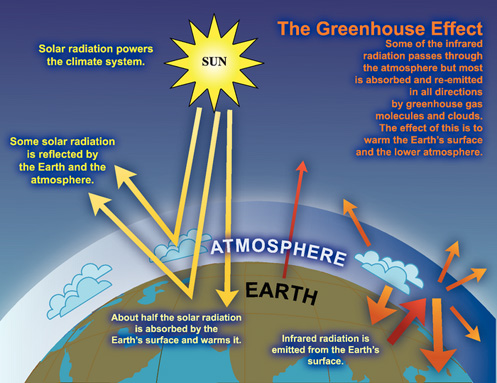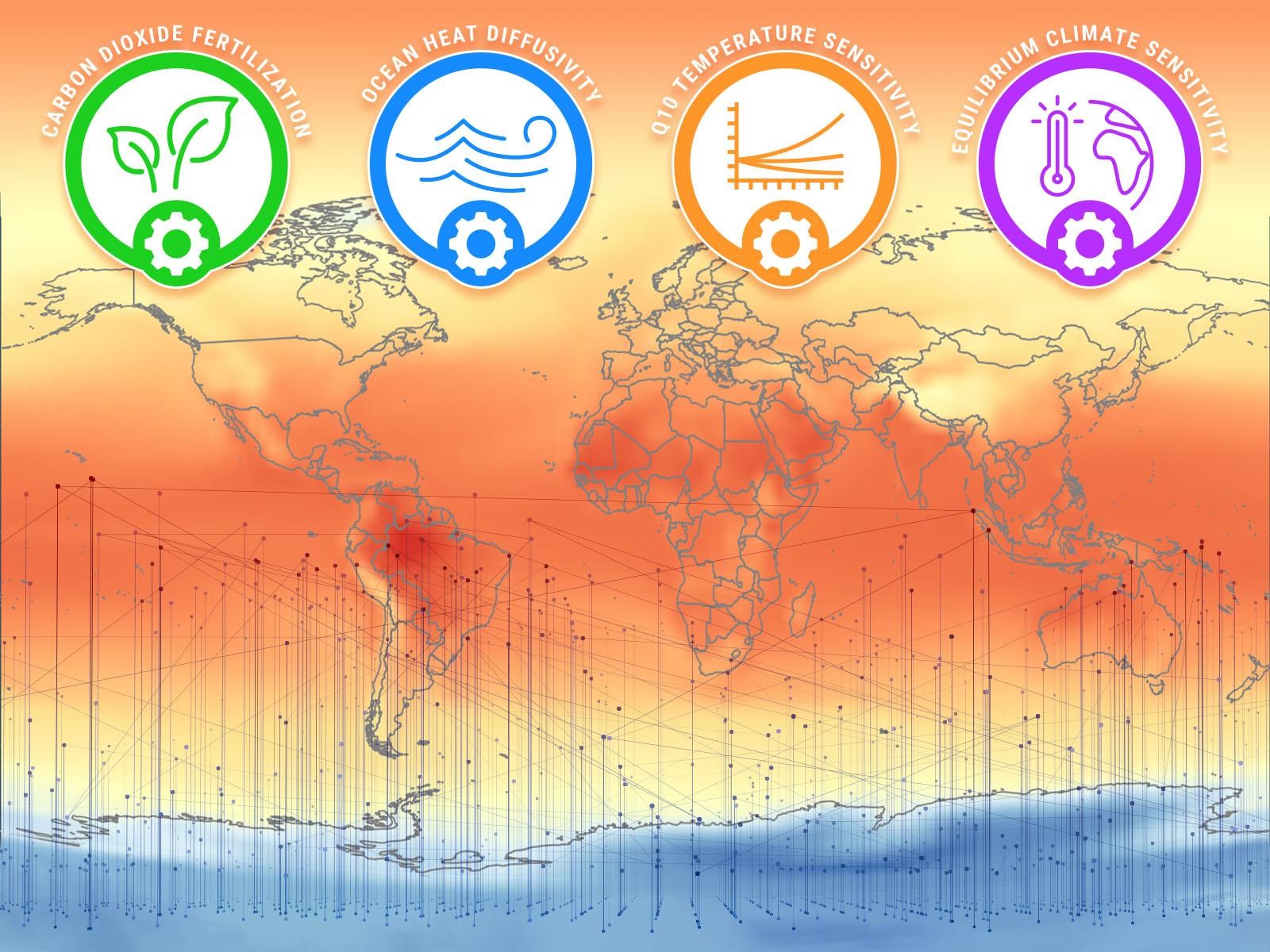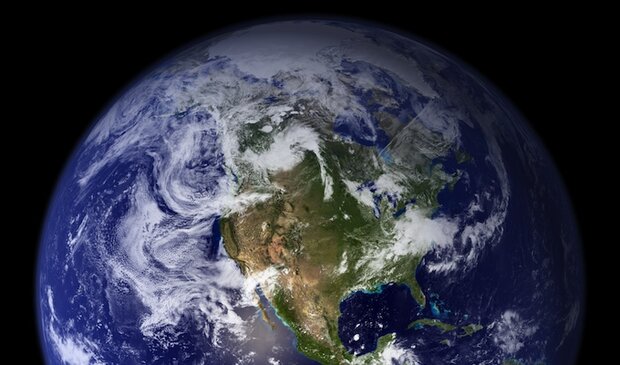What Is Climate Science? Unlocking Earth’s Secrets for a Sustainable Future
- Update Time : Sunday, July 14, 2024

Climate science is the study of Earth’s climate system and its interactions. It encompasses the examination of weather patterns, atmospheric processes, and the impacts of human activities on climate.
Understanding the complexities of climate science is crucial for predicting future climate change and mitigating its effects. Experts in this field analyze data from past and present to model and forecast changes in temperature, precipitation, and extreme weather events. They also study the influence of oceans, land surfaces, and ice sheets on the climate.
Through climate science, researchers provide critical insights that inform policy decisions and help societies adapt to a changing environment. Effective communication of climate science findings is essential to raise awareness and drive action on a global scale.

Credit: opr.ca.gov
The Essence Of Climate Science
Climate science explores the complexities of the Earth’s climate system. It involves studying various components like the atmosphere, oceans, and land surfaces. Scope and definition of climate science encompass the understanding of past weather patterns, current climate trends, and future predictions.
Distinct from weather, which describes short-term atmospheric conditions, climate refers to long-term patterns. Understanding this difference is crucial as climate science seeks to unveil the broader environmental changes over extended periods. By analyzing data and models, scientists can comprehend the impacts of natural and human-induced changes on global and regional climates.
| Climate | Weather |
|---|---|
| Long-term trends | Short-term events |
| Years to millennia | Minutes to weeks |
| Global/regional focus | Local focus |
Historical Perspectives
The field of climate science has roots stretching back centuries. Initially, observations were simple, noted by philosophers and thinkers. They documented weather patterns and speculated about the forces behind them. This laid the groundwork for future exploration.
By the 20th century, technology transformed climate studies. Scientists started using instruments for precise measurements. They collected data on temperatures, atmospheric conditions, and ocean cycles. This led to a deeper understanding of the Earth’s climate system.
| Period | Contribution |
|---|---|
| Before 20th Century | Observational notes, early theories. |
| 20th Century | Technological advancement, precise data collection. |
Core Disciplines In Climate Science
Climate science encompasses various core disciplines. Atmospheric sciences focus on studying the Earth’s atmosphere. This field delves into weather processes and climate change. Experts analyze air properties and dynamics to forecast weather.
Oceanography investigates the Earth’s oceans. It examines ocean currents, temperatures, and marine ecosystems. Oceans play a vital role in climate regulation. They absorb carbon dioxide and heat, influencing global climate patterns.
Glaciology is the study of glaciers and ice sheets. It explores their formation, movement, and impact on sea levels. Melting ice due to global warming is a key concern. Glaciologists track changes to predict future sea-level rise.
Research Tools And Methodologies
Climate science relies heavily on advanced research tools and methodologies to understand the complexities of the Earth’s atmosphere and its interactions. Climate models are essential in predicting future climate patterns. These computational tools simulate the Earth’s climate using mathematical representations of the atmosphere, oceans, land surface, and ice.
Observations from satellites provide critical data about atmospheric temperature, sea level rise, and greenhouse gas concentrations. This information is vital for validating climate models and tracking changes over time. Ice core sampling, another pivotal research method, involves analyzing layers of ice from glaciers or ice caps that have accumulated over thousands of years. These layers contain trapped air bubbles that offer clues about historical climate conditions.
| Research Tool | Use in Climate Science |
|---|---|
| Climate Models | Predict climate patterns |
| Satellite Observations | Monitor atmospheric changes |
| Ice Core Sampling | Reveal past climate conditions |
Key Climate Systems And Phenomena
Climate science explores various systems, including the Greenhouse Effect. This effect is essential for life, trapping heat and keeping our planet warm. Certain gases, like carbon dioxide and methane, act like a blanket. Without this natural process, Earth would be too cold.
Ocean currents also play a pivotal role in climate by moving warm and cold water across the globe. They affect weather patterns and marine ecosystems. Currents can redistribute heat, influencing regional climates.
The Cryosphere—areas covered by ice—reflects sunlight, keeping Earth cool. It includes glaciers, ice sheets, and sea ice. Changes in the cryosphere impact sea levels and global temperatures.

Credit: www.pnnl.gov
Human Influence And Climate Change
Human activities significantly impact Earth’s climate. Anthropogenic emissions, such as carbon dioxide from burning fossil fuels, increase greenhouse gases in the atmosphere. This leads to global warming and climate change. The process is complex, involving various factors and feedback mechanisms.
Deforestation also contributes to climate change. Trees absorb carbon dioxide, but when they are cut down, the stored carbon is released. This adds to the greenhouse effect. Land use changes from forest to agriculture or urban areas alter local climates and affect biodiversity. The role of humans in climate change is undeniable and requires immediate attention.
Socioeconomic Impacts Of Climate Variability
Climate science tells us our planet is changing fast. Agriculture and food security face big challenges. Crops might not grow as well due to weird weather. This means less food for everyone. Farmers are trying hard to keep up.
Sea levels are rising too. This is bad news for coastal communities. Many people live near the sea. Their homes and jobs could get flooded. It’s tough for them to stay safe.
Futures And Predictions
Projected Climate Scenarios are vital for understanding future changes. Scientists use sophisticated climate models to predict these changes. They consider factors like greenhouse gas emissions and land-use patterns. These scenarios help in planning for various future conditions.
Developing Adaptation and Mitigation Strategies is crucial. Adaptation involves adjusting to actual or expected climate. Mitigation refers to reducing the severity of climate change. Strategies include improving energy efficiency, switching to renewable energy sources, and enhancing forest conservation.
| Strategy Type | Examples |
|---|---|
| Adaptation | Sea walls, Drought-resistant crops |
| Mitigation | Wind turbines, Solar panels |
International Efforts And Policy
The Paris Agreement stands as a pivotal framework in global climate change efforts. Nations around the world have committed to limiting global warming. The goal is to stay well below 2 degrees Celsius above pre-industrial levels. Ideally, efforts would aim for a 1.5 degrees Celsius cap. This international treaty was adopted in 2015. It unites countries under a common cause to combat climate change.
Global Climate Initiatives are also crucial. They include a variety of programs and projects. These aim to reduce greenhouse gas emissions and promote sustainable practices. Renewable energy adoption and deforestation prevention are key examples. Such initiatives often rely on international cooperation and funding. Collaboration is vital for their success.
Engaging The Public
Climate literacy is knowing how climate changes affect us all. Media and education play a big part. They tell us stories and facts about our planet’s weather. Through TV, books, and online, they share knowledge. This helps everyone understand what’s happening. It’s like being in a big classroom. We all get to learn and help our planet.

Credit: www.climate.gov
Frequently Asked Questions
What Is The Definition Of Climate Science?
Climate science studies Earth’s climate system and the effects of natural and human-induced climate variations. It encompasses atmospheric science, oceanography, and glaciology to understand weather patterns, climate change, and environmental impacts.
What Do You Learn In Climate Science?
In climate science, you learn about Earth’s climate systems, atmospheric processes, and the impacts of human activity on the environment. This field also covers climate change, weather patterns, and sustainable practices to mitigate ecological issues.
What Do Climate Scientists Do?
Climate scientists study Earth’s climate system and its impacts on the environment. They analyze weather patterns, collect data, and model future climate changes. Their research helps understand global warming effects and guides policy decisions for mitigating climate change.
What Is The Importance Of Climate Science?
Climate science is crucial for understanding weather patterns, predicting natural disasters, and informing policy decisions to mitigate global warming and protect ecosystems.
Conclusion
Climate science is crucial for understanding our planet’s future. It empowers us to make informed decisions and tackle environmental challenges. By delving into this field, we gain insights into weather patterns, ecosystems, and sustainability. Let’s embrace this knowledge to protect Earth for generations to come.
Together, we can make a difference.


















Leave a Reply